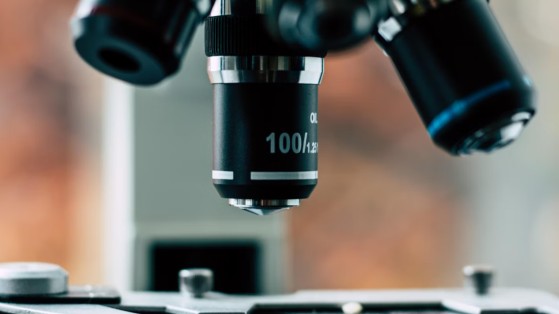Humanin, a mitochondrial-derived peptide comprising 24 amino acids, has garnered significant interest since its discovery in 2001. Emerging research suggests that Humanin may play a pivotal role in various cellular processes, including neuroprotection, metabolic regulation, and cytoprotection. This article delves into the potential implications of Humanin in diverse research domains, highlighting its hypothesized mechanisms and prospective impacts.
Introduction
Mitochondria, traditionally recognized as the powerhouses of the cell, have recently been identified as sources of bioactive peptides with potential regulatory functions. Among these, Humanin stands out due to its highly conserved structure and multifaceted biological activities. Initial findings indicate that Humanin may exert protective impacts against various cellular stressors, positioning it as a molecule of interest in multiple research fields.
Molecular Structure and Synthesis
Humanin is encoded within the mitochondrial 16S ribosomal RNA gene and consists of 24 amino acids. Its synthesis occurs within the mitochondria, distinguishing it from many other peptides synthesized in the cytoplasm. The peptide's high degree of conservation across species suggests a fundamental role in cellular function.
Potential Neuroprotective Properties
One of the most extensively explored areas of Humanin research is its potential neuroprotective properties. Investigations purport that Humanin may interact with pro-apoptotic proteins, thereby inhibiting pathways leading to neuronal cell death. This interaction might be particularly relevant in the context of neurodegenerative conditions, where excessive apoptosis contributes to disease progression.
Additionally, it has been hypothesized that Humanin may mitigate oxidative stress within neuronal cells. Oxidative stress is a known contributor to neuronal damage, and by potentially reducing reactive oxygen species, Humanin may help maintain neuronal integrity. These speculative properties position Humanin as a candidate for further research into research strategies for neurodegenerative diseases.
Metabolic Research and Insulin Sensitivity
Emerging data suggests that Humanin may play a role in metabolic regulation. Studies indicate that Humanin levels correlate with improved insulin sensitivity and glucose metabolism. In research models, Humanin exposure has been associated with better-supported insulin action and reduced markers of metabolic dysfunction.
The mechanisms underlying these impacts are not yet fully elucidated, but it is proposed that Humanin may impact pathways involved in energy homeostasis and lipid metabolism. These findings open avenues for research into Humanin's potential implications in addressing metabolic disorders.
Cytoprotective Potential and Cellular Aging Research
Humanin's cytoprotective properties are believed to extend beyond neuronal cells. Research indicates that Humanin may protect various cell types from stress-induced damage. This protection is thought to involve the inhibition of apoptotic pathways and the reduction of oxidative stress, thereby supporting cell survival under adverse conditions.
Humanin levels have been observed to decline over time. This decline may contribute to increased cellular vulnerability and the progression of cellular age-related diseases. Conversely, maintaining or supporting Humanin levels may potentially promote cellular resilience and longevity. These hypotheses warrant further investigation to elucidate Humanin's role in the cellular aging process and its potential as a target for interventions aimed at promoting maintenance of function as cells age.
Cardiovascular Research Implications
Research indicates that Humanin's protective properties may also aid the cardiovascular system. Studies suggest that Humanin may mitigate damage to cardiac cells under stress conditions, such as ischemia. This cardioprotective impact is hypothesized to result from the peptide's potential to reduce oxidative stress and inhibit cell death pathways in cardiac tissues.
Furthermore, Humanin has been associated with improved vascular function. Investigations purport that by potentially supporting endothelial function and reducing inflammatory responses within blood vessels, Humanin might contribute to overall cardiovascular integrity. These speculative properties make Humanin a molecule of interest in cardiovascular research, particularly concerning strategies to mitigate heart disease.
Potential Implications in Reproductive Science
Research into the role in reproductive science is still in its early stages, but initial findings are promising. Humanin has been detected in reproductive tissues, and studies suggest it may protect germ cells from stress-induced apoptosis. This protective impact may have implications for fertility preservation and the development of interventions to combat the downsides of aging in reproductive cells.
Additionally, findings imply that Humanin's impact on metabolic regulation may indirectly impact reproductive science, as metabolic disorders are often linked to reproductive dysfunction. Scientists speculate that by potentially improving insulin sensitivity and reducing metabolic stress, Humanin may support overall reproductive function. These areas present exciting opportunities for future research into Humanin's potential role in reproductive biology.
Mechanistic Insights and Signaling Pathways
Understanding the mechanisms by which Humanin may exert its diverse impacts is crucial for translating these findings into research implications. Humanin is speculated to interact with several cell surface receptors, including the formyl peptide receptor-like 1 (FPRL1) and a trimeric receptor complex involving ciliary neurotrophic factor receptor (CNTFR), WSX-1, and gp130. These interactions activate intracellular signaling cascades that promote cell survival and stress resistance.
Research Potential and Future Directions
The multifaceted properties of Humanin position it as a promising candidate for research development. It has been proposed that its potential implications span a range of conditions, including neurodegenerative diseases, metabolic disorders, cardiovascular diseases, and cellular age-related functional decline. For more helpful peptide information, researchers are encouraged to read this study.

